Animal Mummies Discovered at Ancient Egyptian Site
Owen Jarus / Photos : North Abydos Votive Zone Project
Source - http://www.livescience.com/18462-animal-mummies-ancient-egypt.html
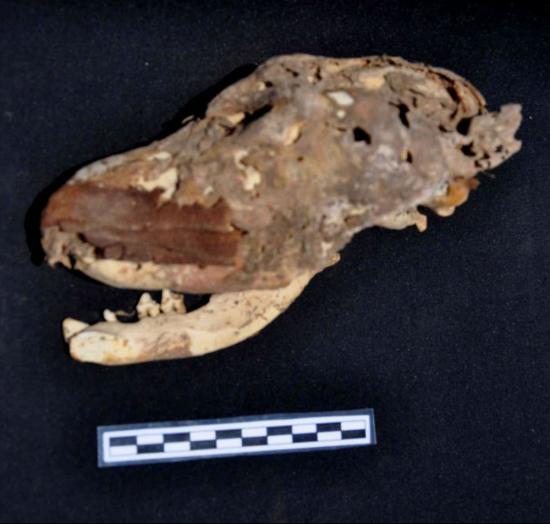
One of the dog skulls, with some of the mummy wrapping still on it.
A wealth of new discoveries, from animal mummies linked to the jackal god and human remains to an enigmatic statue, are revealing the secrets of an ancient holy place in Egypt once known as the "Terrace of the Great God."
The mysterious wooden statue may be a representation of Hatshepsut, a female pharaoh who ruled the land 3,500 years ago, the researchers say. She was typically portrayed as a man in statues, but this one, giving a nod to femininity, had a petite waist.
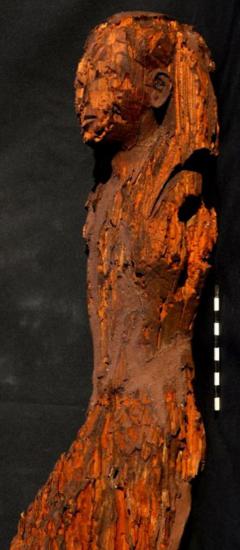
In another chamber of the monumental building the team found a wooden statue with a Nemes headdress on it. At about 25 inches (65 cm) tall it depicts a pharaoh. The narrow waist size raises the possibility that this is Hatshepsut, a female pharaoh who ruled Egypt about 3,500 years ago.
The discoveries were made during one field season this past summer by a team led by Mary-Ann Pouls Wegner, director of the excavation and a professor at the University of Toronto. The findings offer insight into Abydos, a site that was considered a holy place, Pouls Wegner said at a recent meeting of the Society for the Study of Egyptian Antiquities in Toronto, Canada.
Burial of a god
In fact, the earliest kings of Egypt, those who ruled nearly 5,000 years ago, chose to be buried at Abydos. Ancient Egyptians believed that the god of the underworld, Osiris, was buried there as well and there was a tomb at the site that they deemed to be his. According to legend, the god's brother, Set, killed Osiris and his wife Isis, then gathered his remains and brought him back to life. Their son, Horus, is said to have fought Set in battle.
A temple dedicated to Osiris was also constructed at Abydos and every year, in a great procession, the Egyptians would carry an image of Osiris from the temple to his tomb, where it was kept overnight with rituals being performed.
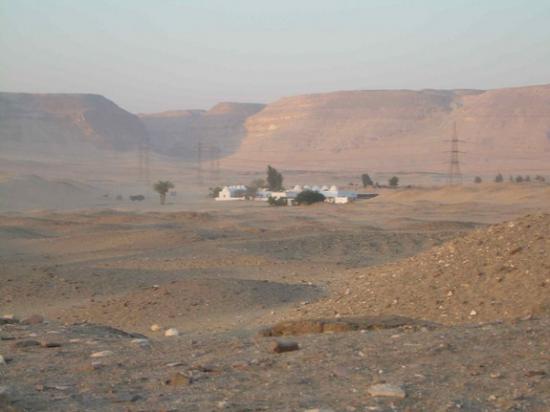
An image of the Terrace of the Great God. While the area appears desolate, and a good portion of it has been plundered, there are still discoveries to be made.
The procession ended with the image of Osiris returning to the temple to great fanfare. "There's a really neat reference on some of the Middle Kingdom (4,000 to 3,600 years ago) material to hearing the sound of jubilation," Pouls Wegner told LiveScience in an interview.
Exploring the terrace
This procession was so popular that Egyptians, both royal and private individuals, built chapels lining the route so that they could take part in the event for eternity.
It had been hypothesized that these chapels gradually encroached on the route, despite a death penalty in place for doing so. According to this theory the more recent chapels would be nearest the route while earlier ones would be farther back.
The team's discovery of an early offering chapel dating back more than 3,600 years, located close to the processional route, suggests this wasn't the case.
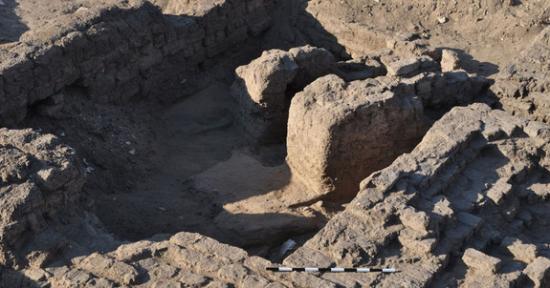
An offering chapel, found at the terrace, it dates back more than 3,600 years. It was found located near the processional route for Osiris.
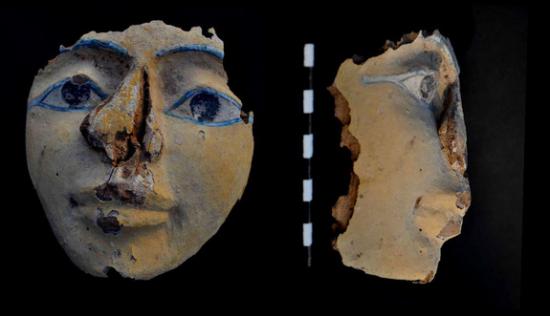
An archaeological team digging at the site of Abydos, in Egypt, has unearthed numerous treasures, including a half dozen examples of these yellow wooden masks. Each of them would have been part of a female coffin, possibly those of chantresses. They date back more than 2,000 years.
"It's rare that you can actually disprove or prove your research question in the course of one short season of fieldwork, but that's exactly what happened," Pouls Wegner said at the meeting.
The chapel itself had a place for libations and an emplacement for a stone stele that is no longer there. "It [the chapel] must have been for someone of some importance," Pouls Wegner said, adding that it appears to have been a "focal point" for offerings over several centuries.
PART. 2